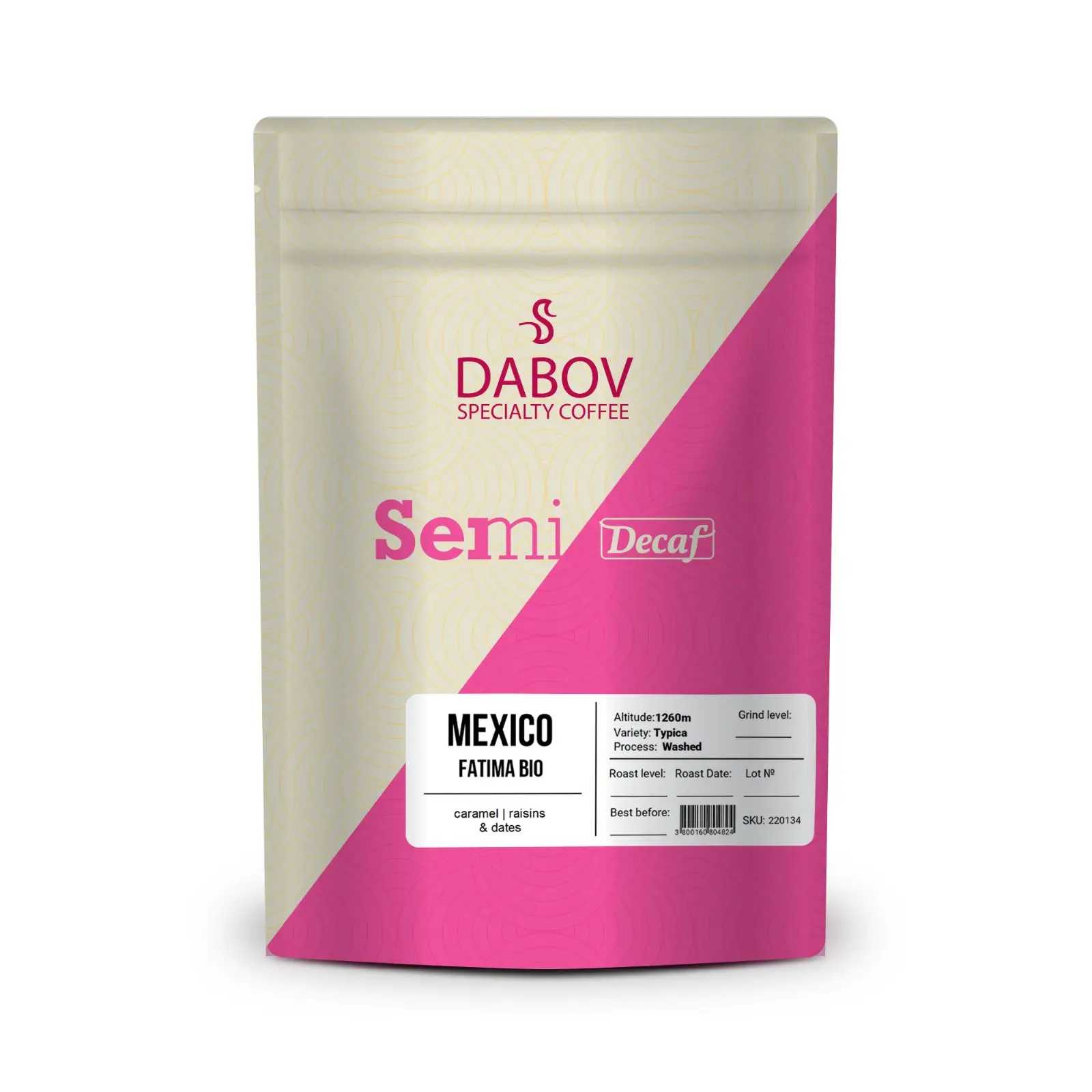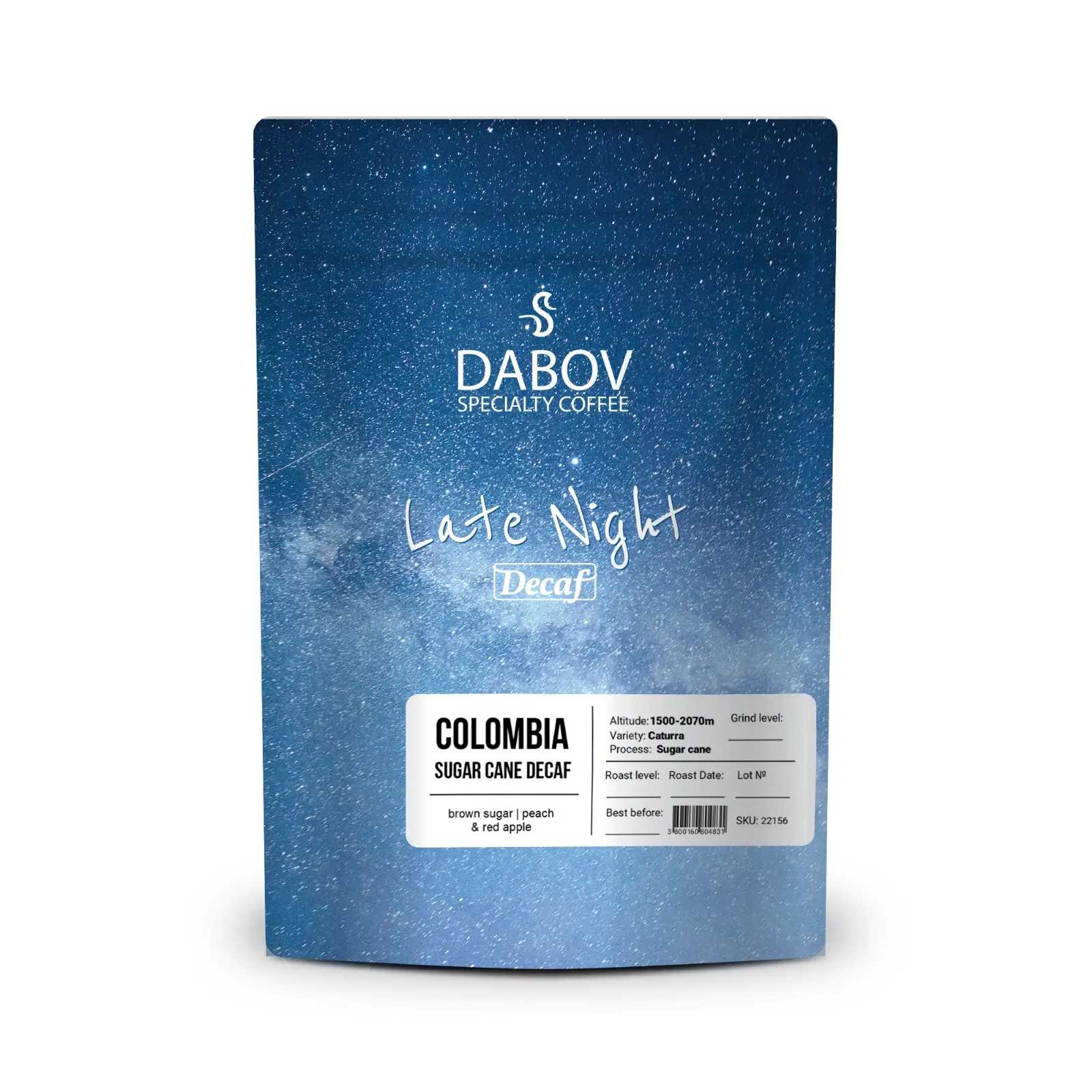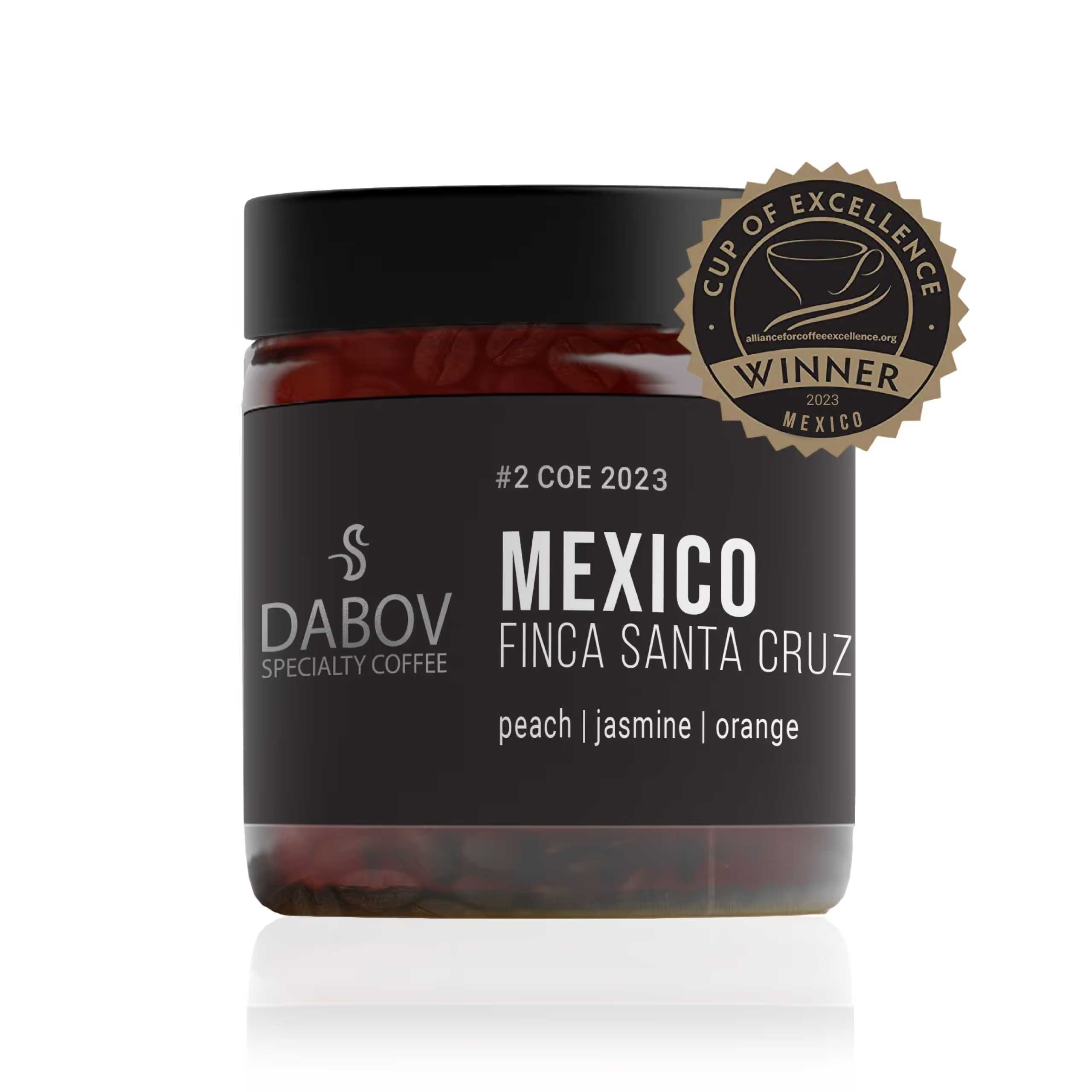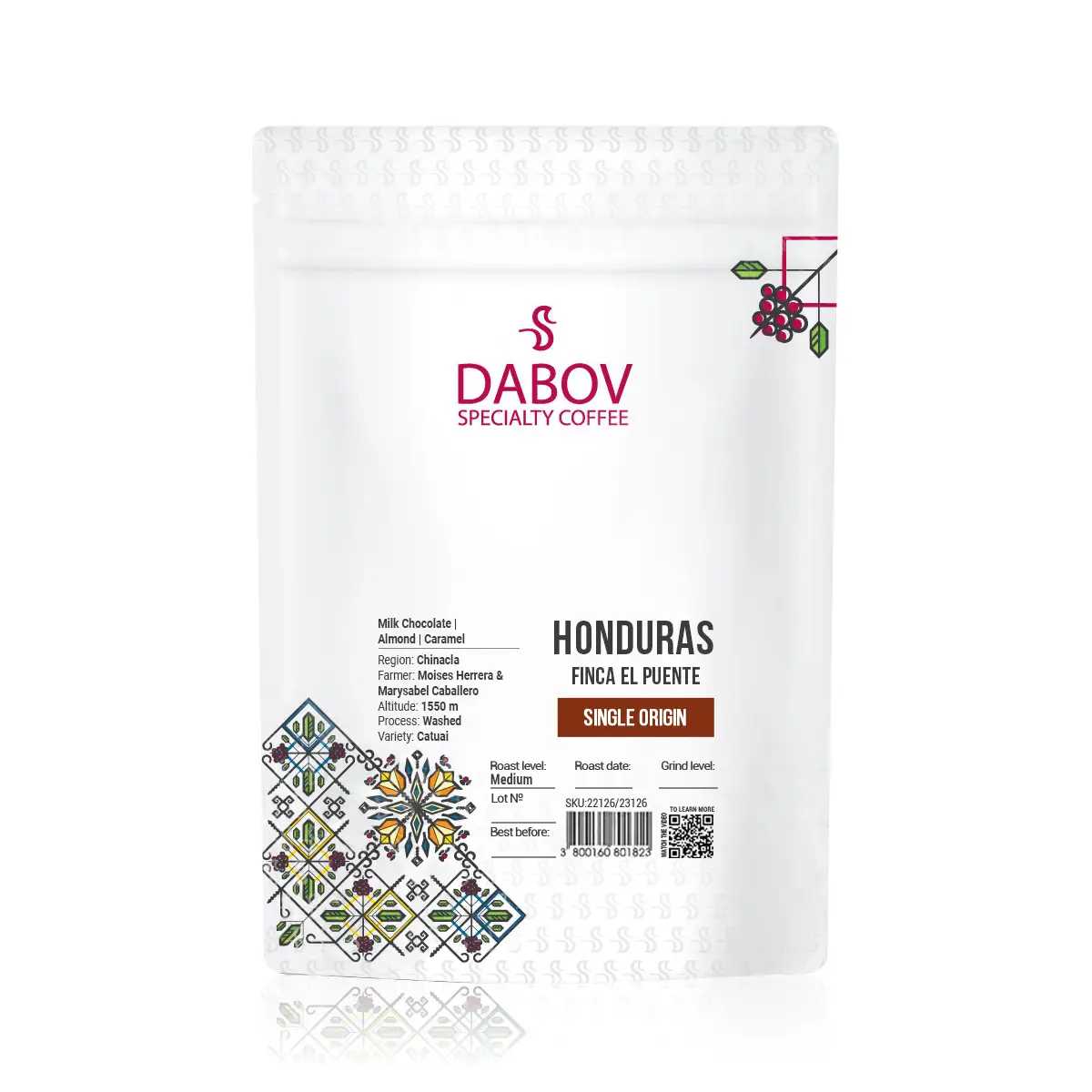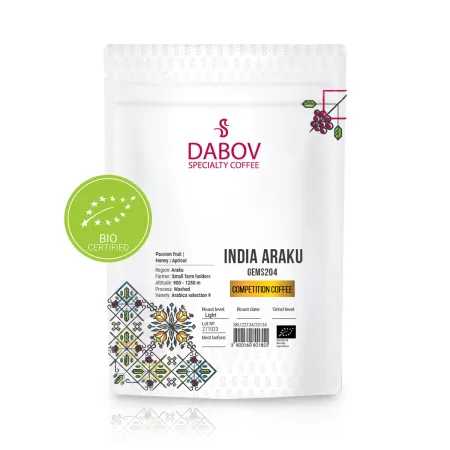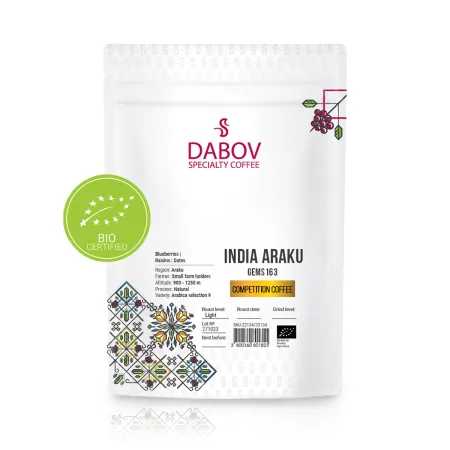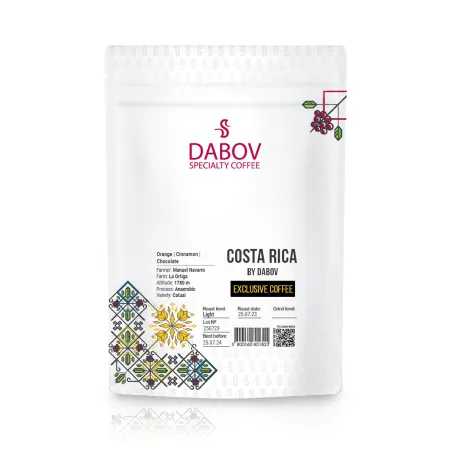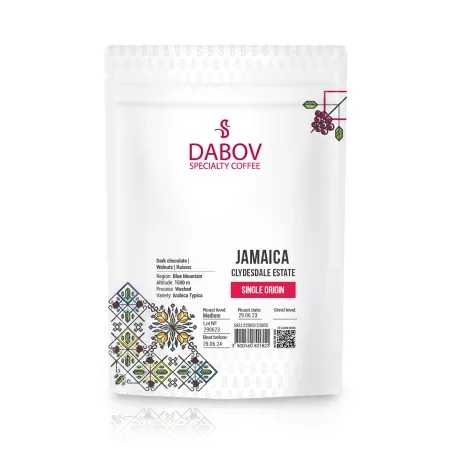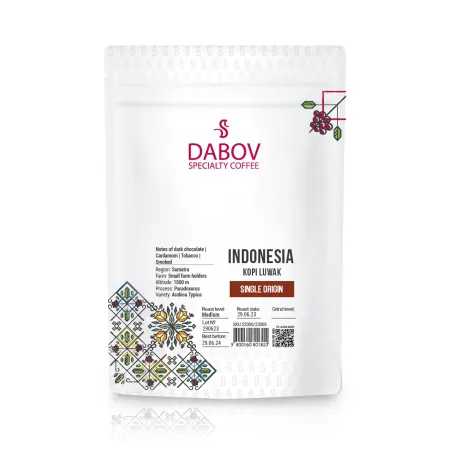The Origins and History of Arabica and Robusta Coffee Beans
Explore the rich history of Arabica and Robusta coffee beans, two of the most significant players in the coffee world. From their ancient origins in Ethiopia to their impact on today’s global coffee culture, this article delves into the fascinating journey of these beans. Discover how Arabica coffee became a symbol of refinement while Robusta emerged as the powerhouse of caffeine content. Learn about traditional and modern cultivation practices, sustainability efforts, and the challenges faced by farmers in a changing climate. Whether you are a casual coffee drinker or a connoisseur, understanding the legacy of these beans will enrich your appreciation of every sip.
Introduction
Coffee, a beverage that has captivated the hearts and palates of people worldwide, holds a significant place in global culture and economy. From the bustling coffeehouses of 17th century Europe to the modern-day artisanal cafes dotting urban landscapes, coffee has been a constant companion to human civilization, fueling conversations, creativity, and commerce. This aromatic elixir, derived from the humble coffee bean, has a rich and complex history that spans continents and centuries. In this comprehensive exploration, we delve deep into the origins and evolution of the two most prominent varieties of coffee beans: Arabica and Robusta. Our journey will take us from the misty highlands of Ethiopia to the lush plantations of Vietnam, unraveling the intricate tapestry of coffee's past and its indelible impact on our present.
The purpose of this article is to provide an in-depth understanding of the historical roots and developmental trajectories of Arabica and Robusta coffee beans. We will examine their botanical characteristics, trace their geographical spread, and analyze their influence on various cultures and economies. By the end of this exploration, readers will gain a newfound appreciation for the complexity and diversity of coffee, equipped with knowledge that will enhance their coffee-drinking experience and perhaps even inspire a deeper engagement with this beloved beverage.
1. Understanding Coffee Beans
1.1 Definition of Coffee Beans
Coffee beans, contrary to popular belief, are not actually beans but rather the seeds of the coffee plant, a member of the genus Coffea. These seeds are found within the fruit of the coffee plant, commonly referred to as coffee cherries. The journey from cherry to cup is a fascinating process that involves careful cultivation, harvesting, processing, and roasting. The coffee plant itself is a woody perennial evergreen shrub that can grow up to 10 meters tall in the wild, though it is often pruned to a more manageable height in cultivation. The plant produces dark green, waxy leaves and fragrant white flowers that give way to the cherries, which typically contain two seeds – the coffee beans we know and love.
The development of coffee beans within the cherry is a delicate process influenced by various factors such as altitude, soil composition, rainfall, and temperature. These environmental conditions play a crucial role in determining the flavor profile of the resulting coffee, contributing to the vast array of taste experiences that coffee enthusiasts enjoy. It's worth noting that while most coffee cherries contain two seeds, occasionally a single round seed develops instead of two flat-sided ones. These round seeds are known as peaberries and are often separated and sold as a premium product due to their unique flavor characteristics.
1.2 Types of Coffee Beans
While there are over 100 species of coffee plants within the Coffea genus, only two are of significant commercial importance: Coffea arabica and Coffea canephora, the latter more commonly known as Robusta. These two species account for the vast majority of coffee production worldwide, with Arabica comprising approximately 60-70% of global coffee production and Robusta making up the remaining 30-40%. Each of these species has distinct characteristics that influence their cultivation, processing, and ultimately, their flavor profile.
Arabica coffee is generally considered to be of higher quality, prized for its complex flavor profile that can include notes of fruit, berries, chocolate, and nuts. It is typically grown at higher altitudes and requires more specific growing conditions, making it more challenging and costly to produce. Robusta, on the other hand, is hardier and more resistant to disease, capable of growing at lower altitudes and in hotter climates. It produces a stronger, more bitter coffee with higher caffeine content, often used in espresso blends and instant coffee production.
Beyond these two main types, there are other less common varieties of coffee beans, such as Liberica and Excelsa. However, these account for a very small percentage of global coffee production and are primarily of interest to coffee connoisseurs and specialty markets. The focus of our exploration will remain on Arabica and Robusta, as they form the backbone of the global coffee industry and have the most significant historical and cultural impact.
2. Arabica Coffee History
2.1 Origins of Arabica Coffee
The story of Arabica coffee begins in the lush, misty highlands of Ethiopia, where the Coffea arabica plant is believed to have originated. Archaeological evidence suggests that coffee has been known to humans for over a thousand years, with some estimates dating its discovery as far back as the 6th century. However, the exact circumstances of its discovery are shrouded in legend and folklore.
One of the most popular origin stories tells of a goat herder named Kaldi, who noticed his goats becoming unusually energetic after eating the berries from a certain tree. Intrigued, Kaldi tried the berries himself and experienced a similar burst of energy. He then shared his discovery with local monks, who began using the berries to stay alert during long hours of prayer. While this tale is likely apocryphal, it reflects the long-standing relationship between humans and coffee in the Ethiopian highlands.
More concrete historical evidence points to the cultivation and use of coffee by the Oromo people of Ethiopia, who would mix coffee berries with animal fat to create energy-rich food balls. The practice of brewing coffee as a beverage is thought to have developed later, possibly in Yemen, where coffee plants were first cultivated outside of Ethiopia. The word "coffee" itself is believed to derive from the Arabic "qahwah," which originally referred to wine but later came to be associated with the dark, stimulating beverage made from coffee beans.
2.2 Evolution and Domestication
The domestication of Arabica coffee is a testament to human ingenuity and agricultural prowess. From its wild origins in Ethiopia, coffee cultivation gradually spread to other parts of the world, with each region developing its own unique practices and varieties. The process of domestication involved selecting plants with desirable traits such as higher yield, disease resistance, and superior flavor profiles.
In the early stages of cultivation, coffee was primarily grown in small gardens or as part of forest ecosystems, mimicking its natural habitat. This method, known as shade-grown coffee, is still practiced in some regions and is considered more environmentally sustainable. As demand for coffee grew, more intensive cultivation methods were developed, including full-sun plantations that allowed for higher yields but required more inputs in terms of water, fertilizer, and pest control.
The genetic diversity of Arabica coffee is relatively limited compared to other crops, as most cultivated varieties descend from a small number of plants that were taken out of Ethiopia. This genetic bottleneck has made Arabica more susceptible to diseases and pests, leading to ongoing efforts to develop new, more resilient varieties through breeding programs and genetic research.
2.3 Historical Spread of Arabica Coffee
The journey of Arabica coffee from its Ethiopian homeland to the far corners of the globe is a fascinating tale of trade, colonialism, and cultural exchange. By the 15th century, coffee cultivation had spread to Yemen, where it was grown in the mountainous regions and exported through the port of Mocha, lending its name to the popular coffee and chocolate combination.
From Yemen, coffee made its way to the Middle East, where it became an integral part of social and cultural life. Coffeehouses, known as qahveh khaneh, sprang up in cities across the region, serving as hubs for intellectual discourse and political debate. The Ottoman Empire played a crucial role in popularizing coffee, spreading its consumption throughout their territories and introducing it to European traders.
Coffee reached Europe in the 17th century, initially met with suspicion and even religious opposition. However, it quickly gained popularity, with coffeehouses becoming centers of social and intellectual life in cities like London, Paris, and Vienna. European colonial powers saw the potential of coffee as a valuable commodity and began establishing plantations in their tropical colonies.
The Dutch were particularly instrumental in spreading coffee cultivation, smuggling coffee plants out of Yemen and establishing plantations in their East Indian colonies, including Java (hence the nickname for coffee). From there, coffee plants were taken to the Americas, with the first successful cultivation in the New World occurring in the French colony of Martinique in the early 18th century.
2.4 Arabica Coffee's Impact on Culture
The influence of Arabica coffee on global culture cannot be overstated. In the Islamic world, coffee became an alternative to alcohol, which was prohibited, and coffeehouses emerged as important social institutions. In Europe, coffeehouses were centers of the Enlightenment, where philosophers, scientists, and politicians gathered to exchange ideas and debate the issues of the day.
In coffee-growing regions, the cultivation of Arabica has shaped local economies and societies. In countries like Colombia, Ethiopia, and Costa Rica, coffee has become an integral part of national identity and a significant source of export revenue. The rise of the specialty coffee movement in recent decades has further elevated the status of high-quality Arabica coffees, with consumers increasingly interested in the origin, processing methods, and unique flavor profiles of different varieties.
The cultural impact of Arabica coffee extends to religious practices as well. In some Ethiopian Orthodox Christian communities, coffee ceremonies are an important social ritual, while in other parts of the world, coffee has been both embraced and contested by various religious groups. The socio-economic impact of Arabica coffee cultivation has been profound, shaping labor practices, land use, and international trade relationships. Fair trade and direct trade movements have emerged in response to concerns about the economic sustainability of coffee farming, aiming to ensure better conditions and prices for coffee growers.
3. Robusta Coffee Origins
3.1 Initial Discovery of Robusta Coffee
The story of Robusta coffee, while less steeped in ancient legend than its Arabica counterpart, is no less fascinating. Coffea canephora, the species from which Robusta coffee is derived, was first discovered growing wild in the Congo Basin of Central Africa in the late 19th century. Unlike Arabica, which had been cultivated for centuries, Robusta was a relative newcomer to the world of commercial coffee production.
The discovery of Robusta coffee came at a crucial time in the history of coffee cultivation. In the late 1800s, coffee leaf rust, a devastating fungal disease, was wreaking havoc on Arabica plantations in Asia and parts of Africa. Botanists and agronomists were actively seeking alternative coffee varieties that could withstand this threat. Robusta, with its natural resistance to coffee leaf rust and other diseases, presented a promising solution.
The name "Robusta" itself is indicative of the plant's hardy nature. It was chosen to reflect the species' robust characteristics, including its resistance to disease and its ability to thrive in conditions that would be challenging for Arabica plants. This resilience made Robusta an attractive option for cultivation in regions where Arabica struggled, particularly in lowland areas with higher temperatures and more variable rainfall.
3.2 Characteristics and Cultivation
Robusta coffee is distinct from Arabica in several key aspects, which influence both its cultivation practices and its flavor profile. Botanically, Robusta plants are larger and more tree-like than Arabica shrubs, often growing to heights of 10-12 meters if left unpruned. The beans are smaller and more rounded than Arabica beans, with a straight crease on the flat side.
One of the most significant differences between Robusta and Arabica is their caffeine content. Robusta beans contain nearly twice as much caffeine as Arabica, which contributes to their more bitter taste but also enhances their natural pest resistance. This higher caffeine content makes Robusta particularly popular for espresso blends, where it adds crema and body to the shot.
In terms of flavor, Robusta is generally described as having a stronger, harsher taste compared to Arabica. It often exhibits earthy, woody, and sometimes rubbery notes, with less acidity and complexity than Arabica. However, high-quality Robusta beans, when properly roasted and brewed, can produce a rich, full-bodied coffee with hints of chocolate and nuts.
Cultivation of Robusta is typically less demanding than Arabica. Robusta plants can grow at lower altitudes (from sea level up to about 800 meters) and tolerate higher temperatures and more rainfall. This adaptability has made Robusta an important crop in regions where Arabica cultivation is challenging, such as parts of Southeast Asia and West Africa.
3.3 Historical Development of Robusta Coffee
The commercial development of Robusta coffee began in earnest in the early 20th century. Its introduction to various parts of the world was driven by both economic factors and the need to combat coffee leaf rust. The Dutch were among the first to recognize the potential of Robusta, introducing it to their colonies in Southeast Asia, particularly Indonesia and Vietnam.
In Vietnam, Robusta coffee would go on to play a transformative role in the country's agriculture and economy. Following the Vietnam War, the government promoted coffee cultivation as a means of economic development. The country's climate and topography were well-suited to Robusta production, and by the 1990s, Vietnam had become the world's second-largest coffee producer, specializing in Robusta.
The expansion of Robusta cultivation coincided with technological advancements in coffee processing, particularly the development of instant coffee. Robusta's strong flavor and high caffeine content made it ideal for instant coffee production, further driving demand for the variety. This period also saw the rise of large-scale, industrial coffee farming, with Robusta's hardiness lending itself well to intensive cultivation methods.
3.4 The Rise of Robusta in Modern Coffee Culture
While Arabica has long been considered the superior coffee variety among connoisseurs, Robusta has seen a resurgence in recent years, particularly in the specialty coffee sector. This renewed interest is driven by several factors, including improvements in cultivation and processing techniques that have enhanced the quality of Robusta beans.
In the espresso industry, Robusta has maintained its importance as a component in many traditional Italian-style blends. Its ability to produce a rich crema and add body to espresso shots makes it a valuable ingredient, even in high-end espresso preparations. Some specialty coffee roasters have begun to explore single-origin Robusta coffees, highlighting the unique characteristics of beans from specific regions.
The rise of the "third wave" coffee movement, with its emphasis on transparency and direct trade relationships, has also brought renewed attention to Robusta. Some roasters and importers are working directly with Robusta farmers to improve quality and develop more nuanced flavor profiles. This has led to a reevaluation of Robusta's place in the coffee hierarchy, with some experts arguing that high-quality Robusta can rival Arabica in complexity and desirability.
Furthermore, as climate change poses increasing challenges to Arabica cultivation in traditional growing regions, Robusta's resilience may become increasingly valuable. Some coffee companies are investing in research to develop Robusta varieties with improved flavor profiles, potentially positioning Robusta as a more prominent player in the future of coffee production.
4. Coffee Cultivation Practices
4.1 Traditional vs. Modern Cultivation
The cultivation of coffee, whether Arabica or Robusta, has undergone significant changes over the centuries, reflecting advancements in agricultural science, changing market demands, and environmental considerations. Traditional coffee cultivation methods, still practiced in some regions, often involve growing coffee plants under the canopy of shade trees, mimicking the plant's natural forest habitat. This method, known as shade-grown coffee, offers several advantages, including natural pest control, soil conservation, and biodiversity preservation.
In contrast, modern cultivation practices often employ full-sun plantations, which allow for higher plant density and increased yields. These intensive farming methods typically rely more heavily on chemical inputs for pest control and fertilization. While more productive in the short term, full-sun cultivation can lead to soil degradation and reduced biodiversity over time.
For Arabica coffee, traditional cultivation often involves small-scale farming on steep, high-altitude slopes, with harvesting done by hand to ensure only ripe cherries are picked. Modern Arabica cultivation may incorporate mechanization where terrain allows, and employ advanced irrigation and fertilization techniques to maximize yields.
Robusta cultivation, historically less finessed than Arabica due to the plant's hardiness, has seen significant modernization in recent decades. In countries like Vietnam, large-scale Robusta plantations employ intensive farming methods, including heavy use of fertilizers and irrigation. However, there's a growing movement towards more sustainable Robusta cultivation, driven by both environmental concerns and market demand for higher-quality beans.
4.2 Sustainable Coffee Farming
Sustainability has become a critical concern in coffee cultivation, driven by environmental challenges, social responsibility considerations, and consumer demand for ethically sourced products. Sustainable coffee farming encompasses a range of practices aimed at minimizing environmental impact, ensuring fair treatment of workers, and maintaining economic viability for farmers.
One key aspect of sustainable coffee farming is the preservation of biodiversity. Shade-grown coffee, mentioned earlier, is a prime example of a cultivation method that supports ecosystem health. By maintaining a diverse canopy of native trees, shade-grown coffee farms provide habitat for birds and other wildlife, help prevent soil erosion, and reduce the need for chemical inputs.
Water management is another crucial element of sustainable coffee farming. Coffee processing, particularly the wet method often used for Arabica, requires significant amounts of water. Sustainable practices include water recycling systems, treatment of wastewater before release, and dry processing methods that reduce overall water usage.
Soil conservation is vital for the long-term viability of coffee farms. Sustainable practices include composting, cover cropping, and terracing on steep slopes to prevent erosion. Some farmers are also experimenting with agroforestry systems, integrating coffee plants with other crops and trees to improve soil health and provide additional income streams.
Certifications play a significant role in promoting sustainable coffee farming. Programs like Fair Trade, Rainforest Alliance, and Organic certification set standards for environmental and social practices, providing consumers with assurance about the sourcing of their coffee. These certifications often come with price premiums, helping to make sustainable farming economically viable for producers.
4.3 Challenges in Coffee Cultivation
Coffee cultivation faces numerous challenges, many of which are becoming more acute due to climate change and market volatility. For both Arabica and Robusta, changing weather patterns pose significant threats. Arabica, in particular, is sensitive to temperature increases, with some traditional growing regions facing the prospect of becoming unsuitable for coffee production in the coming decades.
Disease and pest management remain ongoing challenges. Coffee leaf rust, the disease that spurred the initial spread of Robusta cultivation, continues to threaten Arabica plantations worldwide. In recent years, outbreaks in Central America have devastated crops and livelihoods. The coffee berry borer, a small beetle that infests coffee cherries, is another persistent threat that can cause significant crop losses.
Market volatility presents economic challenges for coffee farmers. Coffee prices are subject to significant fluctuations based on global supply and demand, weather conditions, and speculative trading. This unpredictability can make it difficult for farmers to plan for the future and invest in their farms. The consolidation of the coffee industry, with a small number of large companies controlling much of the global trade, can also put pressure on small-scale producers.
Labor issues are another significant challenge, particularly for Arabica cultivation, which often requires hand-picking of cherries. In many coffee-growing regions, young people are moving away from farming, leading to labor shortages and concerns about the future of coffee production.
Climate change adaptation is perhaps the most pressing challenge facing coffee cultivation. Rising temperatures, changing rainfall patterns, and increased frequency of extreme weather events are already impacting coffee-growing regions worldwide. Researchers and farmers are exploring various adaptation strategies, including developing more resilient coffee varieties, implementing water-conserving irrigation systems, and diversifying farm income through crop diversification.
5. Coffee Bean History: A Comparative Analysis
5.1 Historical Uses and Trade
The historical uses and trade patterns of Arabica and Robusta coffee beans reflect their distinct characteristics and the changing dynamics of global coffee consumption. Arabica, with its longer history of cultivation and more complex flavor profile, has traditionally been the coffee of choice for specialty and gourmet applications. Its use can be traced back to the coffeehouses of the Middle East and Europe, where it was prized for its smooth, nuanced flavor.
In the early days of coffee trade, Arabica from Yemen, shipped through the port of Mocha, was considered the finest in the world. As cultivation spread to other regions, new varieties and processing methods emerged, each imparting unique characteristics to the coffee. The Colombian Milds, for example, became renowned for their balanced, mild flavor, while Ethiopian Arabicas were prized for their fruity, wine-like qualities.
Robusta, entering the market much later, initially found its niche in mass-market applications. Its higher caffeine content and strong flavor made it ideal for instant coffee production, which boomed in the mid-20th century. Robusta also became an important component in espresso blends, particularly in Italy, where its ability to produce a rich crema was highly valued.
The trade patterns of Arabica and Robusta have been shaped by colonial history, agricultural policies, and changing consumer preferences. Arabica production remains centered in Latin America, East Africa, and parts of Asia, with countries like Brazil, Colombia, and Ethiopia being major exporters. Robusta production is concentrated in West Africa, Vietnam, and Indonesia, with Vietnam emerging as the world's largest Robusta exporter in recent decades.
5.2 Economic Impact of Coffee Beans
The economic impact of Arabica and Robusta coffee production on global markets and local economies is profound and multifaceted. Coffee is one of the world's most valuable agricultural commodities, second only to oil in terms of global trade value. For many producing countries, particularly in the developing world, coffee exports are a crucial source of foreign exchange and a significant contributor to GDP.
Arabica coffee, generally commanding higher prices due to its perceived superior quality, has historically been the economic mainstay of countries like Colombia, Ethiopia, and Costa Rica. The development of the specialty coffee industry, with its focus on high-quality Arabica beans, has created new economic opportunities for farmers and producing regions. Direct trade relationships between roasters and farmers have emerged, sometimes allowing producers to capture a larger share of the value chain.
Robusta production, while typically less lucrative on a per-pound basis, has had transformative effects on the economies of countries like Vietnam. Vietnam's rapid rise to become the world's second-largest coffee producer, primarily of Robusta, has been a key factor in the country's economic development over the past few decades. The lower production costs and higher yields of Robusta have made it an attractive crop for smallholder farmers in many tropical regions.
However, the economic impact of coffee production is not without its challenges. Price volatility in the global coffee market can have severe consequences for producers, particularly smallholder farmers who lack the resources to weather market downturns. The concentration of market power in the hands of a few large coffee companies has also been a source of concern, leading to calls for more equitable trade practices.
The differentiation between Arabica and Robusta markets has economic implications as well. While high-quality Arabica commands premium prices in the specialty market, lower-grade Arabica often competes with Robusta in the commodity market. This can lead to situations where Arabica farmers, facing higher production costs, struggle to compete with more efficiently produced Robusta.
The economic impact of coffee production extends beyond farm gate prices. Coffee tourism has become an important source of income for some producing regions, with coffee farms and processing facilities attracting visitors interested in learning about the origins of their favorite beverage. The coffee industry also supports a wide range of ancillary businesses, from equipment manufacturers to cafes and roasteries, creating a significant economic multiplier effect.
6. Coffee Types Guide: Choosing Between Arabica and Robusta
6.1 Flavor Profiles and Consumer Preferences
Understanding the distinct flavor profiles of Arabica and Robusta coffees is crucial for both coffee professionals and enthusiasts. Arabica coffee is generally characterized by a sweeter, softer taste, with notes of sugar, fruit, and berries. It has a higher acidity, which contributes to its perceived brightness and complexity. The body of Arabica coffee can range from light to medium, depending on the specific variety and processing method.
Arabica's flavor profile can vary significantly based on its origin. Ethiopian Arabicas, for instance, are known for their floral and fruity notes, often with a wine-like acidity. Central American Arabicas tend to have a clean, bright taste with nutty or chocolatey undertones. South American Arabicas, particularly from Brazil, often exhibit a nuttier, chocolate-like flavor with medium body and low acidity.
Robusta, on the other hand, has a stronger, harsher taste, often described as grainy or rubbery. It has a heavier body and less acidity than Arabica. The flavor profile of Robusta can include earthy, woody notes, and sometimes a peanutty aftertaste. High-quality Robusta, however, can exhibit chocolate and nut flavors with a deep, rich body that some coffee drinkers prefer.
Consumer preferences for Arabica or Robusta often depend on cultural factors, personal taste, and the specific application of the coffee. In many Western countries, there's a strong preference for Arabica coffee, particularly in the specialty coffee sector. This preference is driven by Arabica's more nuanced flavor profile and lower bitterness.
In parts of Southern Europe, particularly Italy, Robusta is an essential component in traditional espresso blends, valued for its ability to produce a rich crema and add body to the shot. In some Asian and African countries, the strong, bitter taste of Robusta is preferred, especially when coffee is consumed with large amounts of sugar or condensed milk.
The rise of the specialty coffee movement has led to increased consumer awareness of coffee origins and processing methods. This has generally favored Arabica, with its diverse flavor profiles and specific regional characteristics. However, there's also a growing interest in high-quality Robusta among some coffee enthusiasts, particularly for espresso blends.
6.2 Choosing the Right Coffee for Different Brewing Methods
The choice between Arabica and Robusta can significantly impact the final cup, and different brewing methods may be better suited to one type or the other. Understanding these differences can help coffee lovers choose the right beans for their preferred brewing method.
For pour-over and drip brewing methods, Arabica coffee is generally preferred. These methods tend to highlight the subtle flavors and aromas of coffee, making them ideal for showcasing the complex flavor profiles of high-quality Arabica beans. Single-origin Arabicas are particularly popular for pour-over brewing, allowing coffee enthusiasts to explore the unique characteristics of specific regions or farms.
Espresso brewing presents a more complex picture. While high-end espresso blends often feature 100% Arabica beans, many traditional Italian-style espresso blends incorporate a percentage of Robusta. The Robusta adds body and crema to the shot, while also increasing the caffeine content. For those who prefer a stronger, more bitter espresso with a thick crema, a blend including Robusta might be preferable.
French press brewing, which produces a full-bodied cup, can work well with both Arabica and Robusta, or blends of the two. The method's long steeping time and metal filter allow for full extraction of oils and flavors, which can complement the strong, earthy notes of Robusta while also showcasing the complexity of Arabica.
Cold brew coffee, with its long steeping time and low acidity, can be an excellent method for brewing Robusta coffee. The cold brewing process tends to mellow out some of Robusta's harsher notes while emphasizing its full body and chocolate-like flavors. However, high-quality Arabica can also produce excellent cold brew, offering a smoother, more nuanced flavor profile.
For instant coffee, Robusta has traditionally been the bean of choice due to its higher solubility and stronger flavor that can withstand the processing required. However, as the quality of instant coffee has improved, more producers are incorporating Arabica beans into their instant coffee products.
Ultimately, the choice between Arabica and Robusta (or a blend of the two) for any brewing method comes down to personal preference. Experimenting with different beans and brewing methods is the best way for coffee lovers to discover their ideal cup.
6.3 Conclusion: The Future of Arabica and Robusta Coffee
As we look to the future, the roles of Arabica and Robusta coffee in the global coffee industry are likely to continue evolving. Climate change presents significant challenges, particularly for Arabica cultivation, which may lead to shifts in growing regions and increased interest in developing more resilient coffee varieties.
The specialty coffee movement, which has primarily focused on high-quality Arabica, shows no signs of slowing down. This trend is likely to drive continued innovation in Arabica cultivation, processing, and brewing methods. At the same time, there's growing interest in exploring the potential of high-quality Robusta, which could lead to a reevaluation of its place in the specialty coffee world.
Sustainability will undoubtedly be a key focus for both Arabica and Robusta production in the coming years. This includes not only environmental sustainability but also economic sustainability for coffee farmers. Direct trade relationships, improved processing methods, and investments in coffee research are all likely to play important roles in shaping the future of coffee production.
Technological advancements in coffee breeding and processing may blur the lines between Arabica and Robusta. Some researchers are working on developing hybrid varieties that combine the desirable traits of both species, potentially creating new categories of coffee with unique flavor profiles and growing characteristics.
Consumer preferences are also likely to continue evolving. While Arabica will likely maintain its dominance in the specialty coffee sector, increasing awareness of the environmental and social impacts of coffee production may lead some consumers to seek out sustainably produced Robusta as an alternative.
In conclusion, the rich histories of Arabica and Robusta coffee beans have shaped the global coffee industry as we know it today. As we move forward, both varieties will continue to play crucial roles in satisfying the world's ever-growing appetite for coffee. Whether you're a devoted Arabica aficionado or a bold Robusta enthusiast, there's never been a more exciting time to explore the diverse world of coffee.
Conclusion
The journey through the origins and history of Arabica and Robusta coffee beans reveals a fascinating tapestry of cultural exchange, agricultural innovation, and economic development. From the misty highlands of Ethiopia to the bustling plantations of Vietnam, coffee has left an indelible mark on human civilization.
We've explored how Arabica, with its complex flavor profile and long history of cultivation, has dominated the specialty coffee market and shaped coffee cultures around the world. We've also seen how Robusta, with its hardiness and distinct characteristics, has carved out its own important niche in the global coffee industry.
The cultivation practices, economic impacts, and flavor profiles of these two coffee varieties offer a window into the complexities of global agriculture and trade. As we face challenges like climate change and market volatility, the coffee industry continues to evolve, driven by a combination of tradition and innovation.
Understanding the differences between Arabica and Robusta, their historical significance, and their roles in modern coffee culture can greatly enhance one's appreciation of this beloved beverage. Whether you prefer the nuanced flavors of a single-origin Arabica or the bold strength of a Robusta-based espresso, there's a rich world of coffee waiting to be explored.
Call to Action
We encourage you, dear reader, to take this newfound knowledge and apply it to your own coffee journey. Perhaps you'll be inspired to seek out a single-origin Arabica from a region you've never tried before, or maybe you'll give a high-quality Robusta a chance in your next espresso blend. The world of coffee is vast and diverse, with new experiences waiting in every cup.
We'd love to hear about your experiences with Arabica and Robusta coffees. Have you noticed the differences in flavor and body? Do you have a preference for one over the other? Or perhaps you've discovered a fantastic blend that combines the best of both worlds? Share your thoughts and experiences in the comments below. Your insights could help fellow coffee enthusiasts discover their next favorite brew.
Remember, every cup of coffee tells a story – of the farmers who grew it, the roasters who crafted it, and the rich history behind each bean. So the next time you sip your morning coffee, take a moment to appreciate the journey it's taken from seed to cup. Here's to the wonderful world of coffee – may your cups always be full and your conversations stimulating!



